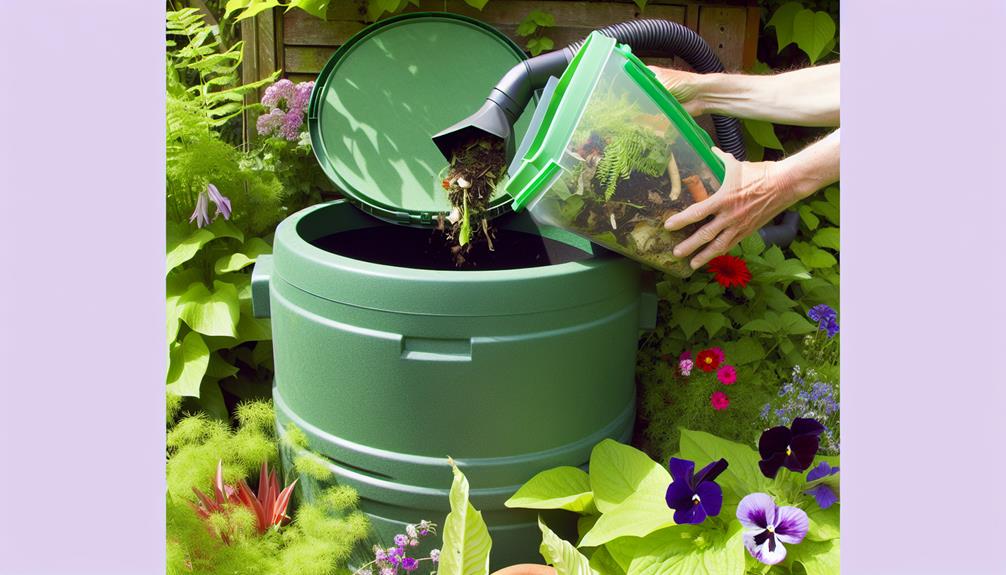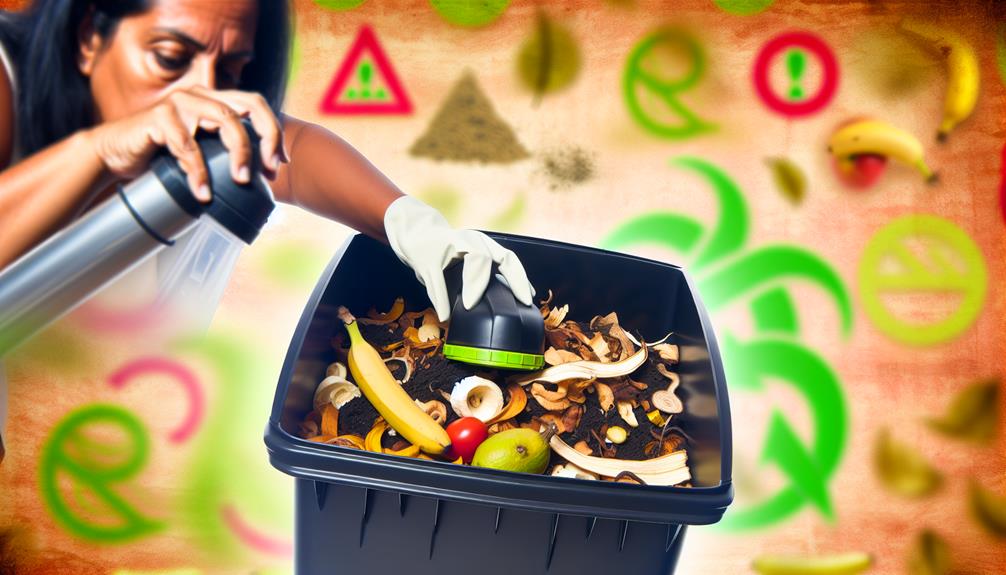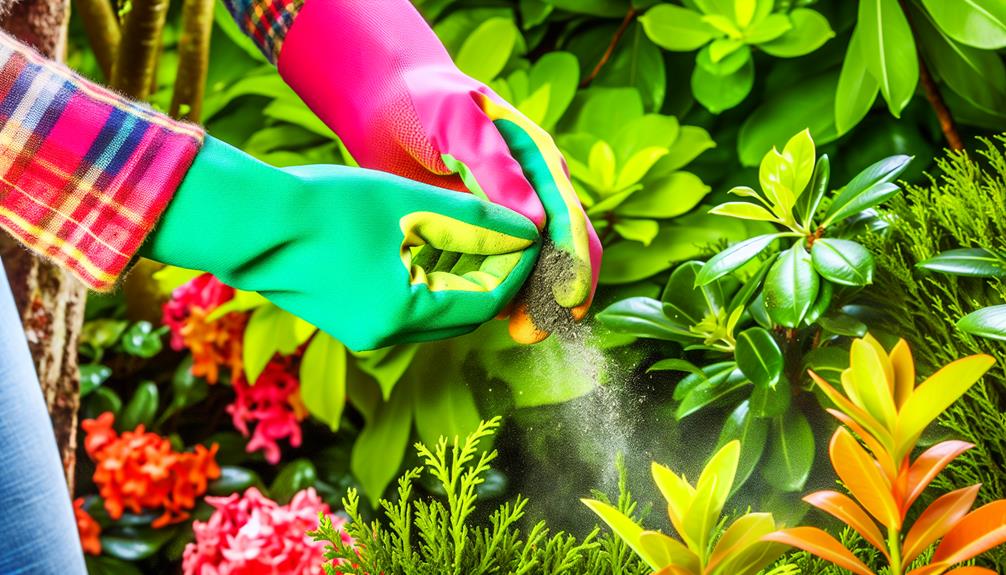

You can compost vacuum cleaner dust, but take precautions. Dust often contains organic matter, which decomposes well, but also inorganic materials like plastic fibers, which can contaminate compost. Always wear a mask and gloves to avoid allergens and toxins when handling dust.
Add dust in thin layers to your compost bin and mix it with coarser materials for proper aeration. Make sure you maintain adequate moisture levels and turn the compost regularly to promote even decomposition. Be mindful of any harmful chemicals in the dust. There are also creative alternatives for using vacuum dust safely. Stick around for more tips.
To effectively compost vacuum cleaner dust, it’s vital to understand what this dust typically consists of. Vacuum cleaner dust is a mix of various particles, often including hair, fibers, and smaller bits of organic matter. Knowing what you’re dealing with helps in deciding how to best compost it.
If you or anyone in your household suffers from dust allergies, it’s even more important to be mindful of what’s in your vacuum cleaner dust. Allergens like pet dander and pollen can accumulate in the dust, potentially causing allergic reactions when you handle or compost it. Using a mask and gloves can help minimize exposure while you’re adding the dust to your compost pile.
Your cleaning frequency also plays a role in the composition and quantity of dust you’ll collect. Frequent vacuuming means you’ll gather smaller, less dense dust particles, which might break down more easily in your compost.
On the other hand, if you vacuum less often, the dust may contain larger debris and more allergens, requiring careful handling. Regular cleaning not only helps maintain a healthier living environment but also provides a more manageable material for your composting efforts.
Also Read: Can You Compost Body Wash?
Understanding the components of vacuum cleaner dust helps you manage its impact on your composting process. Dust composition varies widely but typically includes organic and inorganic materials. Here’s a breakdown of what you might find:
When composting vacuum cleaner dust, it’s important to address safety concerns to make sure the process is both effective and harmless. One primary concern is the potential for allergies impact. Dust often contains allergens like pet dander, pollen, and mold spores. If you or someone in your household suffers from allergies, it’s essential to handle the dust carefully to avoid exacerbating symptoms.

Another significant issue is dust inhalation. When you empty the vacuum cleaner bag or bin, fine particles can easily become airborne, posing a risk to your respiratory health. Wearing a mask can help prevent inhalation of these particles. Additionally, always handle the dust in a well-ventilated area to minimize the risk.
You also need to be cautious about what’s in the dust. It can contain harmful substances like small plastic particles, synthetic fibers, or chemicals from household cleaners. These materials don’t break down easily and can contaminate your compost, rendering it unsafe for garden use.
Also Read: Can You Compost Blood?
After addressing safety concerns, let’s go through the steps to compost vacuum cleaner dust safely. Following these steps will guarantee you’re making productive use of your vacuum dust while maintaining a healthy composting environment.
Vacuum dust doesn’t have to go straight to the compost bin; you can repurpose it in various creative and practical ways around your home. One great idea is to use vacuum dust in your craft projects. By mixing it with glue or papier-mâché paste, you can create textured surfaces or interesting shapes. It’s a simple way to add a unique touch to homemade decorations, ornaments, or school projects.

Another practical use for vacuum dust is soil enhancement. If you have a garden, you can mix small amounts of vacuum dust into your soil. The dust can help retain moisture and improve soil structure, benefiting your plants. However, be cautious about the materials in the dust; avoid using it if it contains synthetic fibers or harmful chemicals.
You can also use vacuum dust as a filler for pet beds and cushions. Just make sure to sift out any sharp objects or synthetic materials first.
Wondering if vacuum cleaner dust attracts pests when composted? Don’t worry! For effective pest prevention, mix in natural repellents like citrus peels or coffee grounds. You’ll keep your compost healthy and pest-free, feeling right at home.
You might wonder if vacuum cleaner dust is safe for indoor plants. It often lacks nutrient content and may contain dust toxicity. It’s better to use compost or a plant-specific fertilizer to keep your plants thriving.
You’re curious about how long vacuum cleaner dust takes to decompose. With good microbial activity, the decomposition rate is typically around six months to a year. It’s a great way to contribute to a greener planet!
Yes, you can add vacuum cleaner dust to worm composting if it has high organic content. Worms thrive on a diverse worm diet, so make sure the dust is free from harmful chemicals to keep your worm community healthy.
For the Current Question, avoid composting synthetic fibers and pet hair from vacuum dust. These materials don’t break down well and could harm your compost. Stick to natural debris for a healthier composting community.
When composting vacuum cleaner dust, make sure you know what’s in it. Avoid adding dust with synthetic fibers, chemicals, or non-biodegradable materials.
Only use dust from natural sources like pet hair, dirt, and food crumbs. Be cautious and follow safety measures to prevent introducing harmful substances into your compost.
If unsure, explore alternative uses such as mulch or filler for garden beds. With careful handling, you can effectively recycle vacuum dust.
